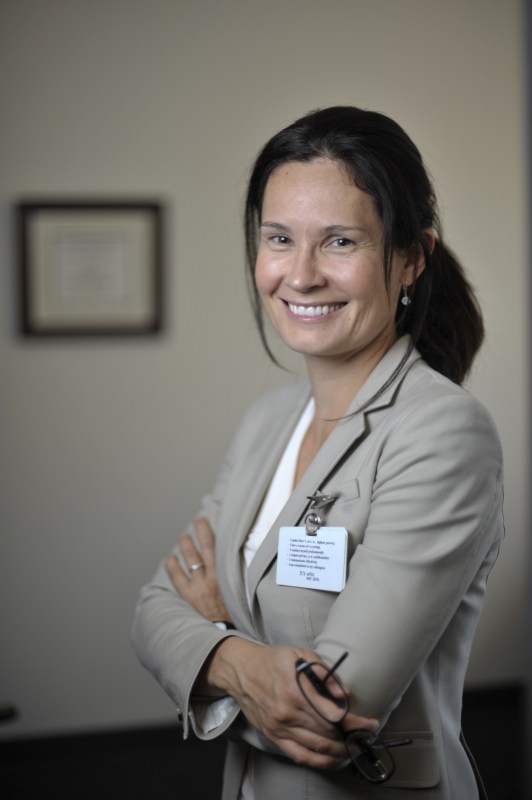
Sabina Gesell, Ph.D., and colleagues are studying how peer groups influence children’s activity levels. (photo by Joe Howell)
Peer selection in aftercare may increase activity, reduce childhood obesity
Another tool in the battle against childhood obesity may be careful selection of who a child plays with after school.
Vanderbilt’s Sabina Gesell, Ph.D., research assistant professor of Pediatrics, is first author of a study in the June issue of the journal Pediatrics that examines the group effect of peers on activity levels of children in after-school care programs.
Eighty children, ages 5 to 12, were observed for 12 weeks during after-care programs that allowed children to interact with different peers throughout the day. Study participants wore a pager-like device called an accelerometer, which detects activity intensity levels over time. The children were observed and were asked to list the friends they “hung out with” the most.
“We found that children in this age group are six times more likely to adjust to their friends’ activity levels, than not. In fact, a network of four to five immediate friends has a significant influence on any individual child regardless of their usual activity level,” Gesell said.
The results showed more active groups tended to draw a child to higher activity levels, while groups that leaned toward sedentary activities brought an individual child’s levels down.
“The average activity level of the group of friends is what influences an individual child. Children are constantly adjusting their activity levels to match their peer group,” Gesell said.
The researchers also examined whether children preferentially select groups based on activity level, perhaps choosing peers whose activity levels were similar to their own, but no such association was found. Children choose friends with other similarities (like being the same gender, age), but activity levels did not seem to be factor.
Gesell said this is exciting because more than 8 million children of working parents typically spend one to three hours per day in after-school programs, making this an ideal place to get children to be more active. Adjusting the makeup of playgroups to place children at risk for obesity into groups with an activity level higher than their own is likely to influence them to be more active too.
Before testing such an intervention in the real world, Gesell will experiment with computer simulations to determine the tipping point at which embedding too many inactive children in a playgroup will bring down the active childrens’ activity levels.
“If you look at childhood obesity efforts across the country, many have failed to look at social context. It is important that we look at all the forces in play and intentionally leverage them to have a maximal impact,” Gesell said.
Other authors of this paper are Vanderbilt’s Eric Tesdahl, M.S., and Eileen Ruchman, B.A.













